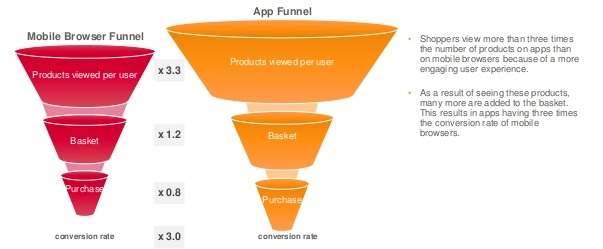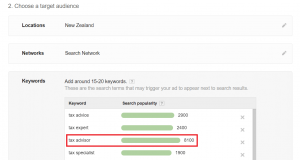The eCommerce industry is growing, and it is growing fast. Forecasters believe that this year, eCommerce sales in the United States alone will exceed $ 550 billion dollars. We saw some developments and trends in 2015 that will continue to present both challenges and opportunities for business owners. Read on to find out last year’s eCommerce developments which business owners should capitalize on in 2016.
1) Online Stores go the Brick-and-Mortar Way
Amazon opened its first physical bookstore in Seattle last year, responding to the emerging trend of the online and offline world coming together. This trend is expected to continue in 2016, as online retailers are understanding the importance of browsing in physical stores.
India’s largest eCommerce company, Flipkart also followed in Amazon’s footsteps as it launched 20 stores in 10 cities in 2015. Flipkart plans to launch 100 such stores by the end of March this year. The company had also announced its partnership with Spice HotSpot Stores last year. Customers can now browse through Flipkart’s range of smartphones at these stores. The store staff would then assist customers to place orders on the Flipkart app and pick up the delivery of their phone at the store or at home.
As this trend picks up, other ‘e-tailers’ like Pepperfry, Lenskart, Zivame, and FirstCry have also ventured into the physical store space. Establishing physical stores is helping eCommerce companies to differentiate themselves from competitors. The stores act as a starting point for potential customers to make a purchase, where they can browse through the products with the help of shop assistants and then place their orders online.
2) The Surge of Social Commerce
Social networks were earlier used to simply market products and engage customers by keeping them informed. However, this phenomenon evolved in 2015 when social networks started to be used as shopping platforms, as Facebook, Twitter and Pinterest released ‘buy or shop’ buttons.
This trend will continue in 2016 as social networks will play an important role in the online shopping journey. Consulting firm Booz & Company has predicted that sales through social media platforms will grow by 93% per year by 2016.
Instagram is dominating the world of social selling. Instagram enables selling through comments which means that if a brand puts up a product for sale, customers who want to buy it simply put “sold” as a comment along with their email address. The shopper then receives an invoice that helps him complete the transaction.
Apparel retailer TopShelf Style uses this feature. The image below demonstrates how TopShelf Style implements this:

Search-based platforms like Google and Amazon are used for most products, but shopping through a social media platform plays a huge role when lifestyle products are involved. For instance, while buying a lipstick shade to go with your favorite dress, hard facts would not suffice. The consumer will prefer visually oriented platforms like YouTube, Pinterest or Instagram for the look and feel of the product.
3) Mobile Micro-Moments
The growth of mobile commerce was a major eCommerce development in 2015. According to a study by Criteo, 29% of eCommerce transactions in the US were done from mobile and the same number was 34% globally. 2015 was clearly the year of mobile, but 2016 will be the year to optimize the mobile strategy.
One phenomenon to watch closely is micro-moment marketing. Micro-moments are moments in the mobile user’s journey that captures intent, context, and immediacy. The user wants to have some information on an immediate basis to make a decision and he/she turns to his smartphone for this. For instance, you want to find the nearest Chinese restaurant while you are out with your friends or want to know the price of a phone in a retail store. While conducting such searches on their smartphones, users prefer to look for the most relevant and immediate information rather than being loyal to any specific brand/company.
Retail brands cannot ignore this trend in 2016, as they have to put themselves in front of consumers in these micro-moments by interacting with them in real-time. You cannot just depend on demographic data rather you need to analyze the intent of the consumer at that particular moment.
Take Airbnb as an example that provided host-led audio tours of Times Square, New York City to tourists who searched for destinations nearby. They were prompted to see New York with a guided-tour-like experience.

4) Personalization of Apps
Why apps are more important than ever, is evident from the fact that apps generate 47% of all mobile revenue, according to Criteo’s Mobile Commerce Report, Q2 2015. Apps convert at a higher rate, which means apps are used by more loyal customers. The same report states that conversion rate of a mobile app is three times than that of mobile browsers.

Apps will continue to remain important in 2016, so will personalizing the user journey. Personalization starts right at onboarding, where apps can use the data provided during sign-up. Information like the user’s name, gender, birthday etc. can help the onboarding experience. The image below will show how brands are doing this:

The app user’s journey is further personalized using product recommendations through push notifications and in-app messages. App marketers are also taking personalization a step ahead by giving follow-up interactions just like the one below:

Brands are adding additional features to personalize. One such example is Flipkart Ping, an app-based messaging service. Ping allows users to connect with friends and family to take their opinions before making a purchase decision.
5) Quicker and More Flexible Delivery
Shipping and delivery services evolved in 2015 with same-day and next day delivery. eCommerce businesses are now expected to catch up with the ‘I-want-it-now’ mindset of customers. 2016 has already begun to see more development in this regard, as deliveries are being made within a few hours.
Amazon has launched Amazon Prime Now that offers one-hour and two-hour delivery services. The service is available to members of Amazon Prime, the annual subscription service of Amazon. The service is also available in the UK and customers are quite satisfied with the service.
Another trend to look at is ‘Click-and-collect,’ that enables customers to order online and pick up their delivery from the physical stores. Flipkart has enabled the click-and-collect feature for customers after putting up stores (which they call ‘experience zones’) in 10 cities across India. This development is also expected to continue in 2016.
6) Automatic and Frictionless Shopping
In 2016, companies are expected to explore ways to make shopping smooth and frictionless for its customers.
Amazon started doing this last year with its Dash button, available to Amazon Prime members. The Dash button is a physical button that lets customers automatically reorder the products that they run out of, while at home, and have them delivered at the doorstep. The customer just needs to know the brands and products that the button is available for and order items with a push of a button. It proves to be very convenient for household supplies like shampoos, toilet-cleaner, groceries, pet food and so on. Take a look at the Dash button in the image below:

In 2016, we could see actual appliances like stoves, microwaves and refrigerators facilitated with order buttons and other shopping mechanisms.
7) Millennials
The generation that falls between 1980-2000 has been defining the course of online shopping and businesses need to tap this demographic in its marketing efforts. According to Nielsen, US millennials spend $ 200 billion per year and 92% of millennials own a smartphone. The same report states that 66% of millennials use the internet to purchase hard-to-find items.
Millennials will continue to rule in 2016. The Nielsen report suggests that coupons and discounts attract them, as 43% of US millennials earning over $ 75,000 per year use coupons. Further, the mobile experience has to be refined for them. Optimizing the mobile apps and having a mobile-friendly website are some areas of focus. Mobile friendly content such as videos, images and infographics help to keep them engaged. Connect with them through social media channels, as they continue to keep up with your brand through Facebook, Instagram, YouTube, Pinterest and so on.
Conclusion
As eCommerce businesses tend to grow, some developments in the industry are coming to light. From the trends we just saw, we can conclude that mobile commerce is going to continue to develop more than ever. Also, we can see that the lines between online and the offline world are blurring, with brands utilizing both spaces. eCommerce is going omnichannel with shoppers having various touch points along the purchase path. These developments are going to evolve in 2016 and the coming years.
Digital & Social Articles on Business 2 Community(105)
Report Post



